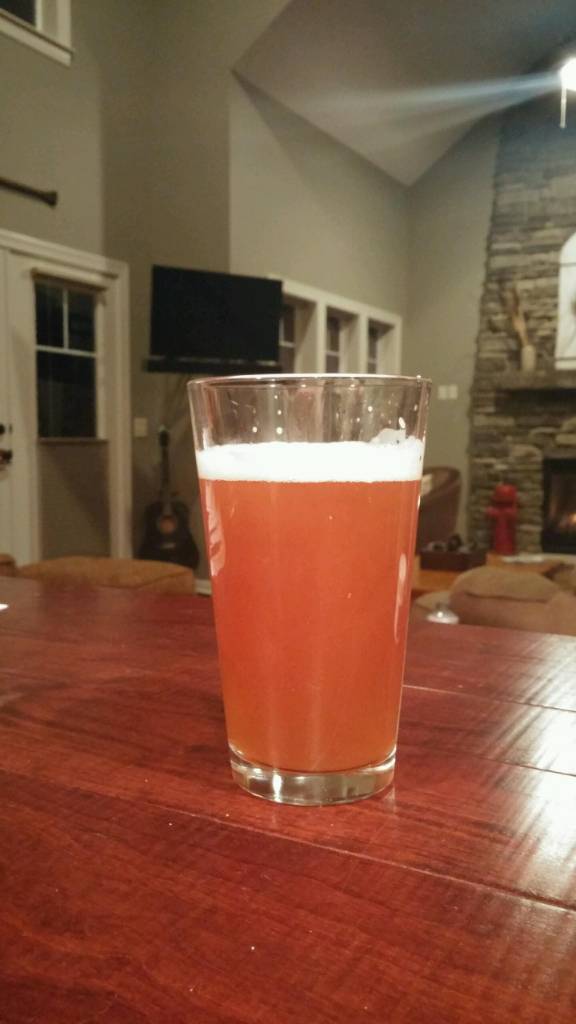jlietzow
Well-Known Member
I got to taste my first ever home brew last night and am really happy with it. It's a Midwest Simply Beer Pale Ale extract kit and is much better than I had expected, especially given my clumsy first attempt at brewing. There's a nice level of bitterness to the beer and a good flavor overall. It also has a really good head, which surprised me since it's only been in the bottle for 6 days.
So I'm a proud papa, but want to improve for future brews. The only real concern I have about this one is the cloudiness. As you can see from the pic it is not clear at all.
I'm sure there are a number of areas for me to improve, but I'd like to start by trying to brew a beer that is less opaque.
Is my brew's cloudiness normal, or is it something that I can / should work to improve? I've read about Irish Moss - is that something that I should consider, or should I just focus on improving the basics first?
Just as background, I fermented in a bucket for 1 week then transferred to a BMB as secondary for another week. The OG was 1.040 and the FG was 1.005 (stable after 1 week). Both readings were consistent with the recipe. It was in the bottle for 6 days before I opened and enjoyed the fruits of my labor last night.
Thanks in advance for any suggestions. I've already come to appreciate this group as a tremendous resource to help me become a capable home brewer.

So I'm a proud papa, but want to improve for future brews. The only real concern I have about this one is the cloudiness. As you can see from the pic it is not clear at all.
I'm sure there are a number of areas for me to improve, but I'd like to start by trying to brew a beer that is less opaque.
Is my brew's cloudiness normal, or is it something that I can / should work to improve? I've read about Irish Moss - is that something that I should consider, or should I just focus on improving the basics first?
Just as background, I fermented in a bucket for 1 week then transferred to a BMB as secondary for another week. The OG was 1.040 and the FG was 1.005 (stable after 1 week). Both readings were consistent with the recipe. It was in the bottle for 6 days before I opened and enjoyed the fruits of my labor last night.
Thanks in advance for any suggestions. I've already come to appreciate this group as a tremendous resource to help me become a capable home brewer.




